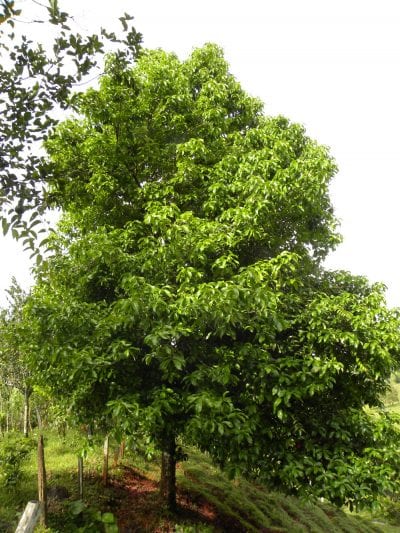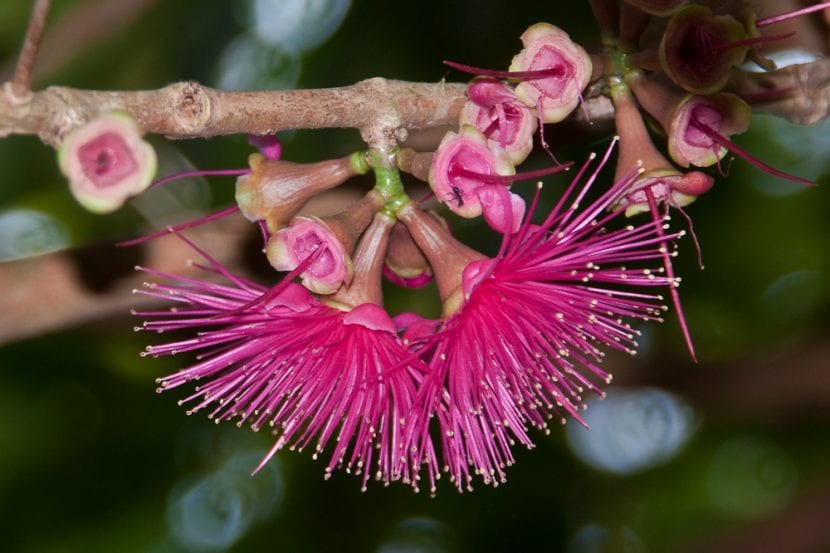
Do you live in an area where the climate is so mild that there is no frost? If so, you may be interested in having a tree that, in addition to being ornamental and giving a pleasant shade, produces edible fruits with a slightly sweet taste ... such as japanese cashew for example.
This is a plant with large leaves and beautiful flowers that you will not be able to stop contemplating. Would you like to know him better? Well, here is your file 🙂.
Origin and characteristics

Image - tropical.theferns.info
Our protagonist it is an evergreen tree -It is an evergreen plant- whose scientific name is Syzygium malaccense. It is popularly known as the rose apple, yambo, water apple or Japanese cashew tree. It is native to Malaysia, although today we also find it in several Central American countries (Costa Rica, Honduras, Panama, El Salvador) and South America (Trinidad and Tobago, Puerto Rico and the Dominican Republic).
It reaches a height of 8 to 20 meters. Its leaves are elliptical or oblong, measuring 12-36cm x 5,5-16cm and are leathery, green or olive green. The flowers look like ballerina pompoms, reddish in color. The fruit is oblong or obovoid, has fleshy pulp, is red, pink or white when ripe and measures 50-75 x 20-50mm.
How do you take care of yourself?

If you want to get a copy, we recommend providing the following care:
- Location: outdoors, in full sun or in semi-shade.
- Earth:
- Garden: it must be rich in organic matter and have good drainage.
- Pot: universal growing medium (you can buy it here); Anyway, you have to know that due to its size it can only be in a container for a few years, until it reaches a height of 2 meters.
- Irrigation: frequent. During the warmer months you have to water 3-4 times a week, and the rest of the year every 2-3 days.
- Subscriber: it has to be paid with organic fertilizers, such as guano or manure.
- Planting or transplanting time: in spring.
- Multiplication: by seeds in spring.
- Harvest: the fruits can be harvested when they have acquired the size and color mentioned above.
- Rusticity: it does not resist frost.
What did you think of the Japanese cashew?
because it has the name of Japanese maranon? since it does not resemble the classic maranon at all ... what is the origin of the name?
Thank you
Hi Gittel.
I could not tell you. The common or popular names are given by the people, depending on their culture, tradition and / or the characteristics or uses that are given to the plant.
Unlike the scientists, that each plant only has one and you can know the origin and the meaning that it has by studying the taxonomy, this does not happen with the common names.
Regards!